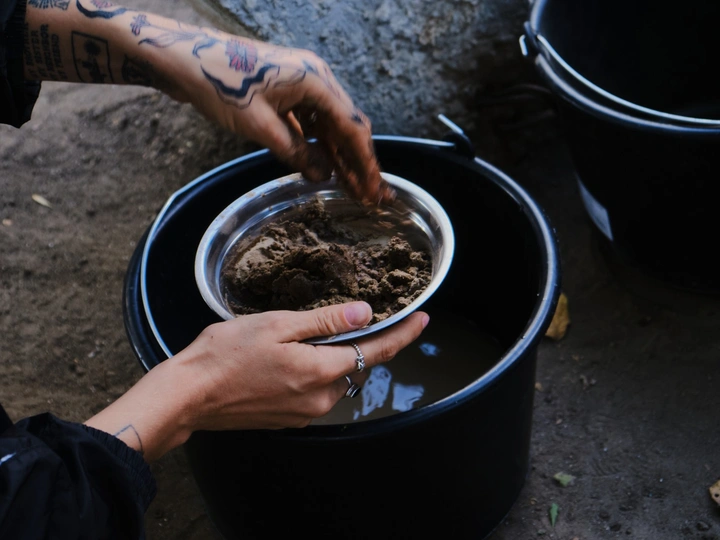Which Craft

Victoria Caubet
We are Victoria and Emily, two spatial practitioners committed to inclusive and sustainable spaces through an anticipatory architecture.
Victoria brings over a decade of experience in construction, crafts, and material exploration. Currently developing earth-hemp building materials in France, she has worked as a mason, and an architect. She sees the LINA fellowship as an opportunity to reintegrate architecture to address beneficiary engagement and spatial impact.
Victoria's notable achievements include specializing as a woman mason in heritage restoration, contributing to reconstruction efforts in Ukraine, and developing innovative materials with excavation and waste at BC Materials. Her work on projects like Les Ateliers Luma, Gent waste brick for DING, and the scaling up of Leem production showcases her dedication to sustainable material development. She wants to connect with the LINA network to build lasting working relationships and explore how communities cultivate mutual growth and resilience.
It was at BC Materials that Victoria had the opportunity to meet Emily. Emily's journey as a spatial practitioner, spanning from Australia to the Arctic, has profoundly shaped her perspective on environmental care. Her diverse background encompasses architecture, research, education, and material circularity.
Emily's involvement with BIØN, a European network focused on materiality, exemplifies her interest in collaborative work, knowledge sharing, and community building. Among her notable achievements are the "Down to Earth" research project on circular building practices with AES Studio, published article in The Arctic Institute on Arctic geopolitics and energy transitions, a recipient of the Erasmus for Young Entrepreneurs program and teaching at RMIT University.
Shifting her position from architect to facilitator, Emily’s strengths lie at the intersection of interdisciplinary collaboration, research and exploring unchartered territories.
Hands in clay, this project was seeded when we, Emily and Victoria, shared a material practice. Hours spent on crafted labour led to recurring discussions about everyday life and standing for our positions (love, work, family)... Our conclusions often circled back to how one gives and receives support. As we shift our practices towards repair, we ask: how can we craft a culture of care?
To master a craft, knowledge and experience is gained with repetition. Material craft is often compared to preparing a recipe. Collecting with care potent components, stewing them in the cauldron, testing and repeating until the recipe transforms into something magical. Tapping into our material powers, we ask: which recipes can lead us to stronger practices of care, collaboration and ways of working?
As the legends go, witchcraft possesses the power for both healing and harm. This is our point of departure to present an investigative framework on how we can reconstruct our post-disaster environments and harness the powers of healing and repair that already exist in many practices. We ask: how can we unlearn our linear destructive ways?
Drawing a red line through our practice, we are inspired by our material process, the element ‘earth,’ the perpetual cycles of life and its capacity to repair. What can we share as we feel a sense of quietness through shaping and activation? In the same way that states of clay are a continuum of pleasant dispositions, how can we seed spaces with such a symbolic potential?
Confronted with the destruction of our world and its need for a rebirth, we seek testimonies and practices of thriving ecosystems (animals, organisations, politics…) regardless of their legitimacy. What (dark) magic makes them so robust?
We want our craft to evolve into storytelling, collecting voices from the existing courageous spatial practitioners that inspire us, who have found a way to make and bring a sense of family and warmth back into our social space.